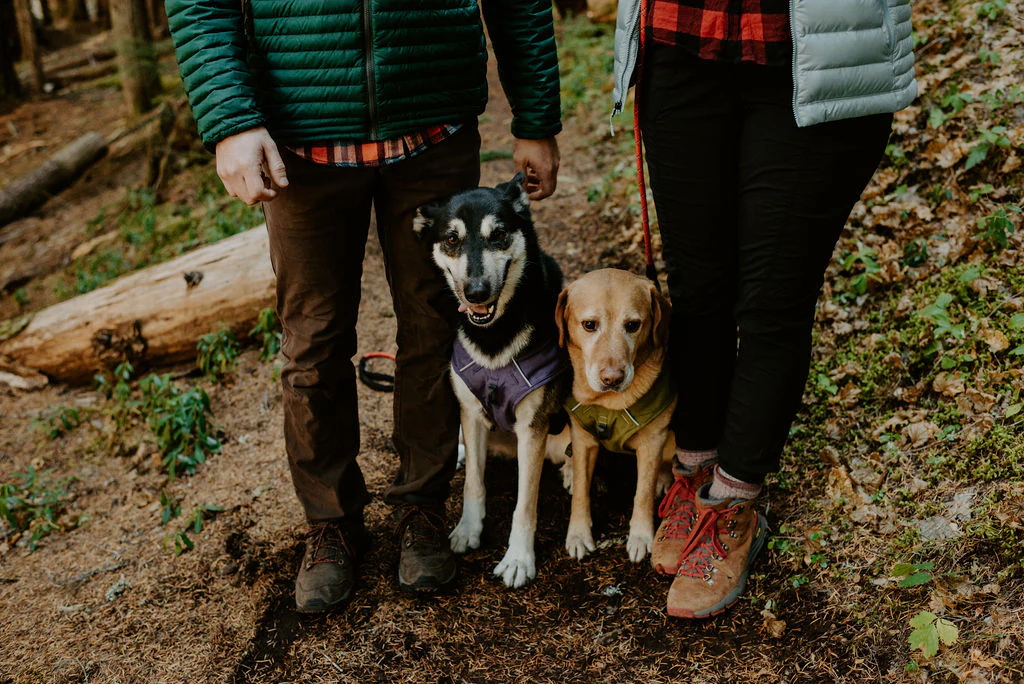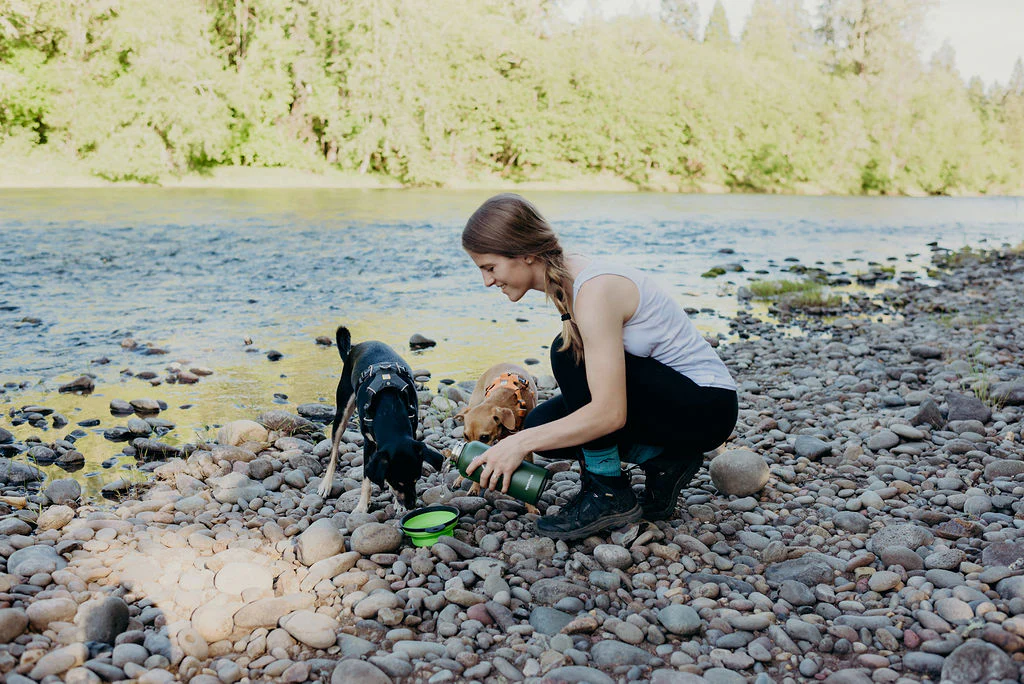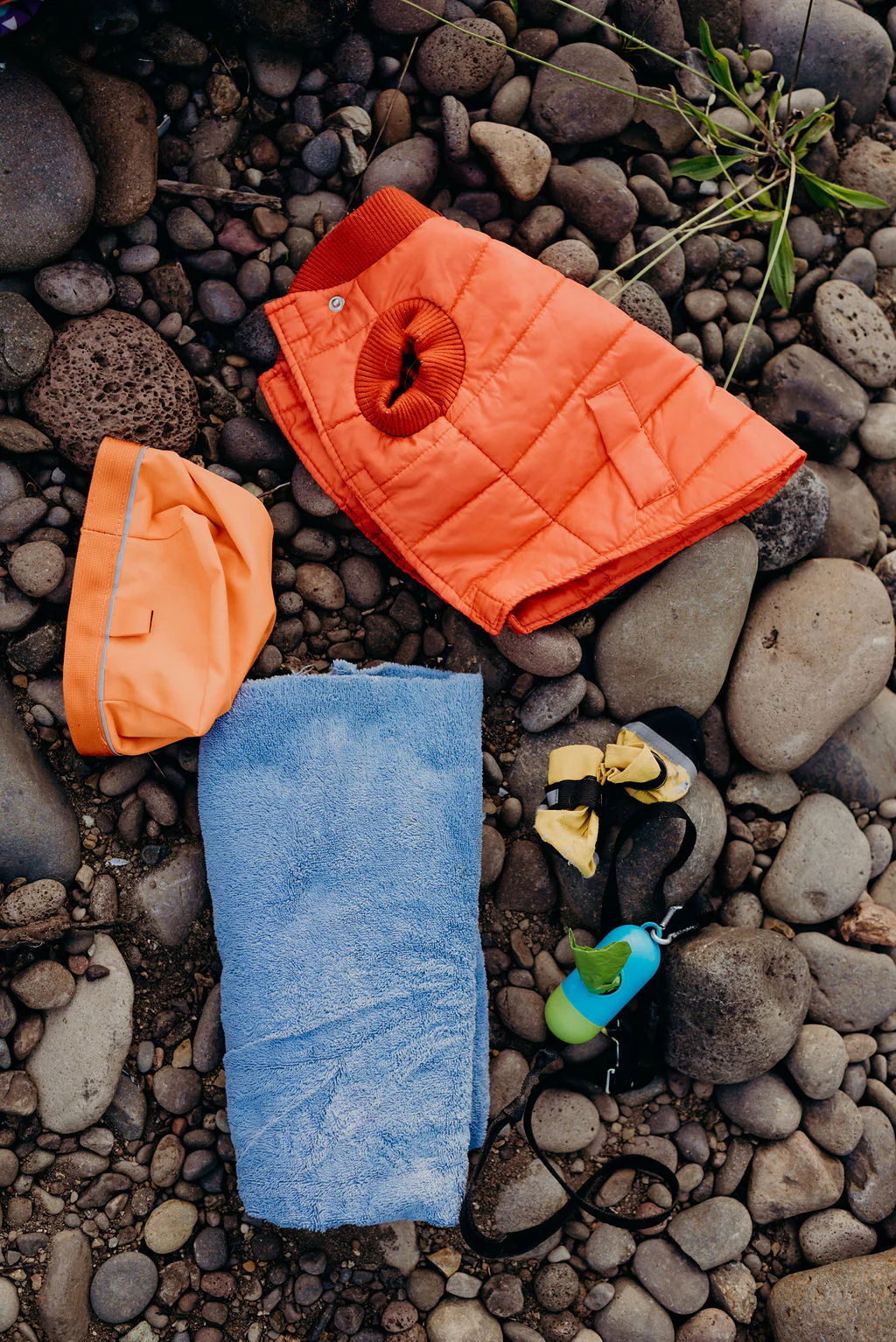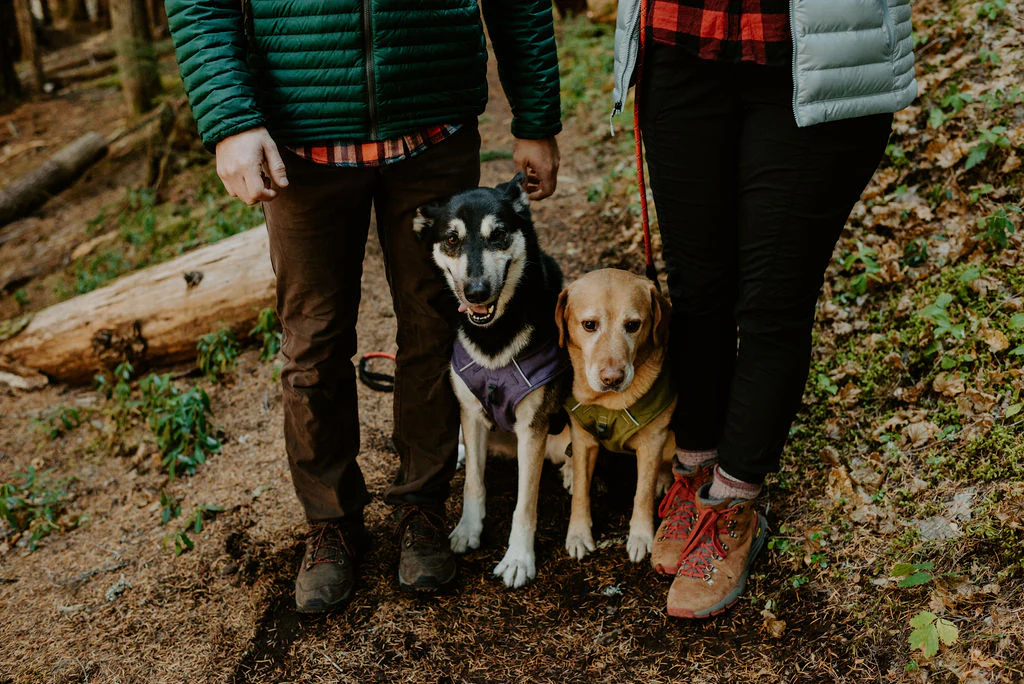
The Ultimate Hiking with Pets Checklist: Your Complete Guide to Safe Trail Adventures
After years of exploring mountain trails with my two rescue dogs, Luna and Bear, I've learned that successful pet hiking requires meticulous preparation and the right gear. This comprehensive hiking with pets checklist covers everything from essential equipment to emergency protocols, ensuring you and your furry companion can safely enjoy the great outdoors together. Whether you're planning your first adventure or looking to refine your current approach, this guide from Nature Guests will help you create unforgettable memories on the trail.
Essential Gear for Your Hiking with Pets Checklist
Creating the perfect hiking with pets checklist starts with understanding what gear is absolutely essential versus what's merely convenient. During my first hiking adventure with Luna, I learned this lesson the hard way when we encountered an unexpected thunderstorm without proper protection. Now, after hundreds of miles on various terrains, I've refined my gear selection to focus on items that truly make a difference for both safety and enjoyment.
Protective Gear and Clothing
A high-quality harness forms the foundation of any hiking with pets checklist. Unlike regular collars, hiking harnesses distribute pressure evenly across your dog's chest, providing better control and reducing strain on their neck during challenging terrain. I've found that adjustable harnesses with multiple attachment points offer the most versatility for different trail conditions.
Recommended Gear: Get the Voyager All Weather Harness on Amazon →
Protective booties deserve special attention in your hiking with pets checklist. While some dogs naturally develop tough paw pads, most benefit from protection against sharp rocks, hot pavement, and thorny vegetation. Bear initially resisted wearing booties, but after a gradual introduction process and positive reinforcement, he now associates them with exciting adventures. The key is starting the acclimation process at home, allowing your pet to wear them for short periods during regular walks.

Hydration and Feeding Equipment
Water management represents perhaps the most critical aspect of any hiking with pets checklist. Dogs require significantly more water per pound of body weight than humans, especially during physical exertion. I typically carry 1.5 times the amount I initially calculate, as factors like temperature, humidity, and trail difficulty can dramatically increase consumption needs. Collapsible bowls have revolutionized how I manage hydration breaks, providing a lightweight solution that doesn't compromise on functionality.
Hydration Essential: Get Collapsible Travel Bowls on Amazon →
Food considerations for your hiking with pets checklist depend heavily on hike duration and intensity. For day hikes exceeding four hours, I pack high-energy treats and a light meal. Freeze-dried treats work exceptionally well because they're lightweight, won't spoil, and provide quick energy. For multi-day adventures, similar to planning your family hiking packing list, portion control becomes crucial to manage pack weight while ensuring adequate nutrition.
Safety and Emergency Equipment
No hiking with pets checklist is complete without comprehensive first aid preparations. Pet-specific medical supplies differ significantly from human first aid kits, requiring specialized items like hydrogen peroxide for inducing vomiting, activated charcoal for toxin absorption, and veterinary-approved antiseptics. I learned the importance of tick removal tools during a particularly challenging hike through tall grass, where Luna picked up numerous ticks that required immediate attention.
Safety Priority: Get Complete Pet First Aid Kit on Amazon →
Pre-Hike Preparation and Training
Proper preparation transforms a potentially stressful experience into an enjoyable adventure for both you and your pet. Your hiking with pets checklist should include a comprehensive training regimen that begins weeks before your planned adventure. Much like preparing kids hiking gear requires understanding their specific needs, pet preparation demands attention to their physical capabilities, behavioral patterns, and comfort levels with various equipment.
Physical Conditioning and Fitness Assessment
Building your pet's endurance should be a gradual process integrated into your hiking with pets checklist preparation. I start with short, easy walks on varied terrain, gradually increasing distance and difficulty over several weeks. Bear, being a larger breed, required a different conditioning approach than Luna, highlighting the importance of breed-specific considerations in your planning.
Veterinary consultation forms a crucial checkpoint in your hiking with pets checklist. Beyond basic health clearance, discuss specific trail hazards like altitude changes, extreme temperatures, and potential exposure to wildlife or toxic plants. Your veterinarian can also recommend appropriate vaccinations and preventive treatments for parasites commonly encountered in outdoor environments.
Behavioral Training and Trail Readiness
Training components of your hiking with pets checklist extend far beyond basic obedience commands. Trail-specific behaviors like "leave it" become critical when encountering wildlife scat, toxic plants, or food scraps left by other hikers. I spent considerable time teaching both Luna and Bear to respond immediately to recall commands, as even well-trained dogs can become overwhelmed by novel scents and sounds in wilderness environments.

Leash training deserves special emphasis in your hiking with pets checklist preparation. Trail leashes differ significantly from neighborhood walking equipment, requiring dogs to navigate obstacles, steep terrain, and varying surfaces while maintaining proper positioning. Practice sessions should include scenarios like passing other hikers, encountering cyclists, and navigating narrow trail sections where space is limited.
Equipment Familiarization
Introducing gear gradually prevents negative associations that can make trail days stressful for everyone involved. Your hiking with pets checklist should include dedicated practice sessions with each piece of equipment. Backpacks, booties, and specialized harnesses all require adjustment periods, and attempting to use them for the first time on a trail creates unnecessary complications.
Pack weight distribution represents a sophisticated element of hiking with pets checklist preparation. Dogs can typically carry 10-25% of their body weight, depending on their fitness level, breed characteristics, and the specific demands of your chosen trail. I start with minimal weight and gradually increase load while monitoring Bear and Luna's gait, energy levels, and overall comfort.
Safety Considerations and Trail Etiquette
Trail safety extends beyond individual preparation to encompass responsible interaction with other trail users, wildlife, and the natural environment. Your hiking with pets checklist must address these broader responsibilities while maintaining focus on your pet's immediate safety needs. I've observed that many pet-related trail incidents could have been prevented with better preparation and situational awareness.
Hazard Recognition and Avoidance
Environmental hazards require constant vigilance and should be prominently featured in your hiking with pets checklist. Toxic plants like oleander, foxglove, and various mushroom species pose serious threats, particularly to curious dogs who explore with their mouths. I maintain a mental catalog of dangerous flora in each region where we hike, supported by field guides and local ranger recommendations.
Wildlife encounters demand specific protocols within your hiking with pets checklist. Large predators obviously present the most dramatic risks, but smaller animals like porcupines, skunks, and venomous snakes cause far more frequent problems. Bear bells, while controversial among some hikers, provide an additional layer of protection by announcing your presence to wildlife that might otherwise be surprised by your approach.
Trail Etiquette and Social Responsibility
Proper trail etiquette forms an essential component of any responsible hiking with pets checklist. Yielding right-of-way follows established protocols: hikers yield to horses, hikers and horses yield to mountain bikers going uphill, and dogs should be controlled and positioned appropriately during all encounters. I've found that stepping off-trail and having Luna and Bear sit while others pass creates the most positive interactions.
Waste management represents perhaps the most visible aspect of responsible pet hiking covered in your hiking with pets checklist. Pack-it-out policies apply to all pet waste, requiring both adequate supplies and commitment to environmental stewardship. Biodegradable bags, while better than traditional plastic, still require proper disposal in designated receptacles rather than being left on trails or in wilderness areas.
Paw Protection: Get Premium Hiking Boots on Amazon →
Navigation and Communication
Communication planning deserves dedicated attention in your hiking with pets checklist, particularly for remote areas where cell service is unreliable. GPS devices, satellite communicators, and detailed topographic maps provide redundant navigation and emergency communication capabilities. I carry multiple forms of navigation because dogs can't assist with route-finding when you become disoriented.
Trail condition assessment should be integrated into your hiking with pets checklist planning process. Recent weather events, seasonal closures, and current wildlife activity all influence trail safety for pet hikers. Local ranger stations, online trail reports, and hiking community forums provide valuable intelligence that can prevent dangerous encounters or disappointing experiences due to impassable conditions.
Seasonal and Weather-Specific Tips
Seasonal variations dramatically impact the contents and priorities of your hiking with pets checklist. What works perfectly for spring hiking may prove inadequate or even dangerous during winter conditions. I've learned to maintain separate gear collections and modify my approach based on specific seasonal challenges, much like adapting winter hiking gear essentials for harsh conditions.
Summer Heat Management
Summer hiking demands the most comprehensive heat management strategies in your hiking with pets checklist. Dogs regulate temperature primarily through panting and limited sweating through paw pads, making them particularly vulnerable to heat exhaustion and heat stroke. I plan summer hikes for early morning or late evening hours, avoiding peak temperature periods when possible.
Cooling accessories become essential components of your warm-weather hiking with pets checklist. Cooling vests, bandanas, and elevated cots for rest breaks all help manage body temperature. I also carry extra water specifically for cooling purposes, using it to wet down Luna and Bear's coat and paw pads during particularly hot conditions. This technique, combined with seeking shade for extended rest periods, has prevented heat-related issues during challenging summer hikes.

Winter Weather Challenges
Cold weather hiking requires specialized items in your hiking with pets checklist that many novice pet hikers overlook. Insulating layers, paw protection against ice and salt, and emergency warming supplies become critical for safety. I learned the importance of monitoring for hypothermia signs during a particularly challenging winter hike when Bear began shivering and showing reduced coordination.
Snow and ice create unique challenges that require specific adaptations to your hiking with pets checklist. Booties with aggressive tread patterns prevent slipping, while also protecting paws from ice ball formation between toes. Emergency shelter considerations become more complex when traveling with pets, as standard bivy sacks and emergency blankets must accommodate multiple bodies while maintaining thermal efficiency.
Wet Weather Adaptations
Rainy conditions transform your hiking with pets checklist priorities toward waterproofing and rapid drying capabilities. Waterproof coats for dogs, absorbent towels, and protected storage for electronics and medical supplies become essential. I've found that dogs with thick undercoats like Bear require different rain protection strategies than shorter-haired breeds like Luna, necessitating breed-specific gear selections.
Post-rain trail conditions often present more challenges than the precipitation itself, requiring specific considerations in your hiking with pets checklist. Muddy trails increase slip hazards and make cleaning more difficult, while standing water may harbor parasites or toxic algae blooms. Trail assessment becomes more critical, as conditions can change rapidly after weather events, transforming familiar routes into hazardous obstacles.
Emergency Preparedness on the Trail
Emergency preparedness represents the most critical aspect of any comprehensive hiking with pets checklist, yet it's often the most overlooked by casual hikers. I learned this lesson during a close call when Luna suffered a deep paw cut on sharp granite, requiring immediate first aid and evacuation planning. Since then, emergency protocols have become central to my pre-hike planning and gear selection process.
Medical Emergency Response
Medical emergency protocols must be specifically adapted for pets and clearly defined in your hiking with pets checklist. Unlike humans, dogs cannot verbally communicate pain levels or symptoms, requiring heightened observation skills and systematic assessment techniques. I maintain a laminated reference card with normal vital signs, emergency contact numbers, and step-by-step treatment protocols for common trail injuries.
Evacuation planning becomes significantly more complex when your hiking with pets checklist includes animals that may be unable to walk out under their own power. I carry an emergency stretcher specifically designed for dogs, along with techniques for improvising transport systems using trekking poles and emergency blankets. Weight considerations become critical, as carrying an injured 70-pound dog like Bear requires entirely different strategies than assisting Luna at 35 pounds.
Lost Pet Recovery Strategies
Lost pet scenarios require immediate action protocols that should be thoroughly rehearsed and included in your hiking with pets checklist preparation. GPS tracking collars provide the most reliable recovery method, but backup strategies including scent trails, food placement, and systematic search patterns become essential when technology fails. I practice recall training regularly because emergency situations amplify stress levels that can override normal obedience responses.
Communication strategies for lost pet emergencies extend beyond personal search efforts to include coordination with local authorities, search and rescue teams, and volunteer organizations. Your hiking with pets checklist should include contact information for regional animal control agencies, veterinary emergency clinics, and social media groups that assist with lost pet recovery efforts. Time sensitivity in these situations makes pre-planning crucial for successful outcomes.
Environmental Emergency Response
Environmental emergencies like sudden weather changes, flash floods, or wildfire encounters require rapid decision-making and clear evacuation routes integrated into your hiking with pets checklist planning. Dogs may not recognize danger signals that are obvious to humans, requiring firm leadership and sometimes forcing them into uncomfortable situations for their own safety. I practice emergency evacuation scenarios in controlled environments to build confidence and muscle memory for both myself and my pets.
Shelter and protection strategies must accommodate multiple species' needs while maintaining efficiency and portability. Your hiking with pets checklist emergency shelter should provide adequate space and insulation for all team members, with particular attention to pets' tendency to seek comfort through close contact during stressful situations. Testing emergency gear before you need it reveals compatibility issues and allows for modifications in controlled conditions rather than during actual emergencies.
Post-Hike Care and Recovery
Post-hike care often determines whether your adventure was ultimately successful and sets the foundation for future hiking enjoyment. Your hiking with pets checklist should extend beyond trail completion to include comprehensive recovery protocols that ensure your pet's health and wellbeing. I've learned that proper post-hike care can prevent minor issues from becoming serious problems while building positive associations with hiking experiences.
Physical Inspection and Health Assessment
Systematic physical inspection forms the cornerstone of post-hike care in your hiking with pets checklist routine. I conduct thorough examinations of paws, checking for cuts, abrasions, embedded debris, or signs of excessive wear. Ears require special attention, particularly after hikes through tall grass or wooded areas where seed pods and debris can cause serious complications if left unaddressed.
Tick and parasite inspection becomes increasingly important as you expand your hiking range and explore different ecological zones. Your hiking with pets checklist should include systematic inspection techniques, proper removal tools, and follow-up monitoring protocols. I've found that immediate post-hike inspection catches most parasites before they can establish firm attachment or transmit diseases, making this routine both preventive and therapeutic.
Cleaning and Grooming Protocols
Cleaning protocols in your hiking with pets checklist serve both hygiene and health monitoring purposes. Thorough cleaning reveals injuries that might be hidden by dirt or vegetation, while removing potential irritants and allergens that could cause delayed reactions. I use lukewarm water and gentle, pet-safe cleansers, paying particular attention to areas where gear may have caused chafing or pressure points.
Gear cleaning and maintenance should be integrated into your post-hike hiking with pets checklist routine, much like maintaining your summer hiking packing list equipment. Proper cleaning extends gear life, prevents odor buildup, and allows for inspection of wear patterns that might indicate fit problems or usage issues. I clean and inspect all gear immediately after each hike, addressing minor repairs before they become major problems.
Recovery and Rest Management
Recovery planning represents the final component of your comprehensive hiking with pets checklist, ensuring that physical exertion doesn't compromise long-term health or future hiking enthusiasm. I monitor Luna and Bear's energy levels, appetite, and behavior patterns for several days following challenging hikes, adjusting rest periods and activity levels based on their individual recovery needs.
Hydration and nutrition support continue post-hike as critical elements of your hiking with pets checklist recovery protocols. Electrolyte replacement, easily digestible foods, and comfortable rest environments all contribute to efficient recovery. I've learned that some dogs, particularly those with competitive drives like Bear, may not self-regulate activity levels during recovery periods, requiring enforced rest to prevent overexertion injuries.
Building on successful experiences forms the foundation for expanding your hiking adventures and refining your hiking with pets checklist for future outings. Each hike provides learning opportunities about your pet's capabilities, preferences, and potential areas for improvement. I maintain detailed logs of each adventure, noting what worked well and what could be improved, creating a personalized database that informs future planning decisions.
Conclusion
Developing and maintaining a comprehensive hiking with pets checklist represents an ongoing commitment to safety, preparation, and responsible outdoor recreation. Through hundreds of miles of shared adventures with Luna and Bear, I've learned that successful pet hiking depends far more on thoughtful preparation than on expensive gear or extreme destinations. The most rewarding hikes often happen close to home, where careful attention to your hiking with pets checklist creates opportunities for building confidence and strengthening the human-animal bond that makes outdoor adventures so special.
Your hiking with pets checklist will continue evolving as you gain experience and your pet's needs change over time. What worked perfectly for a young, energetic dog may require modification as they age or if health conditions develop. Similarly, your own skill development and comfort level with various trail conditions will influence gear choices and destination selection. The key is maintaining flexibility while never compromising on safety fundamentals.
Remember that every element of your hiking with pets checklist serves multiple purposes: safety, comfort, environmental protection, and enjoyment enhancement. Whether you're planning your first adventure or refining techniques developed over years of experience, the comprehensive approach outlined in this guide from hiking with pets checklist resources will help ensure that every trail experience contributes to positive memories and strengthened outdoor skills.
The rewards of well-planned pet hiking extend far beyond physical exercise and scenic views. These shared adventures build trust, communication, and mutual respect while providing mental stimulation and socialization opportunities that enrich both human and animal lives. Your investment in developing and following a thorough hiking with pets checklist pays dividends in the form of safer, more enjoyable experiences that create lasting memories and inspire continued exploration of the natural world together.
Start Your Adventure Today!
Ready to hit the trails with your furry companion? Use this comprehensive hiking with pets checklist as your foundation for safe, enjoyable outdoor adventures that create lasting memories for both you and your pet.
Happy trails from all of us at Nature Guests! 🐾

